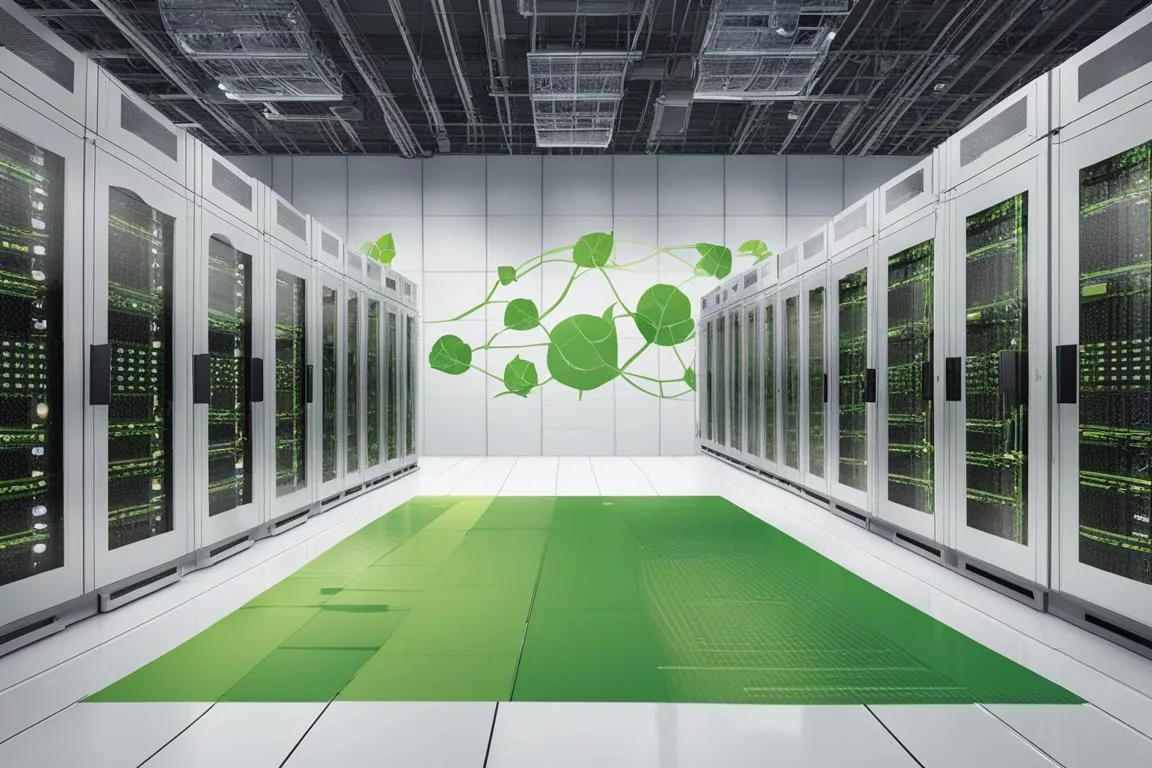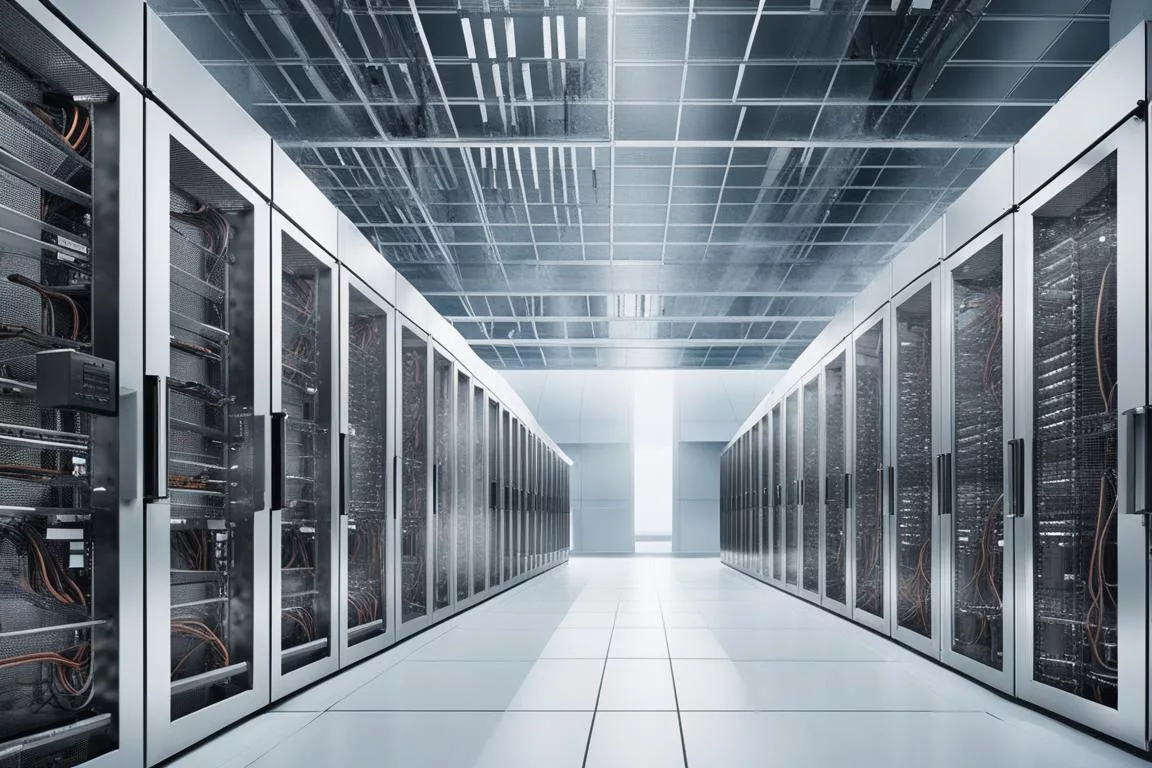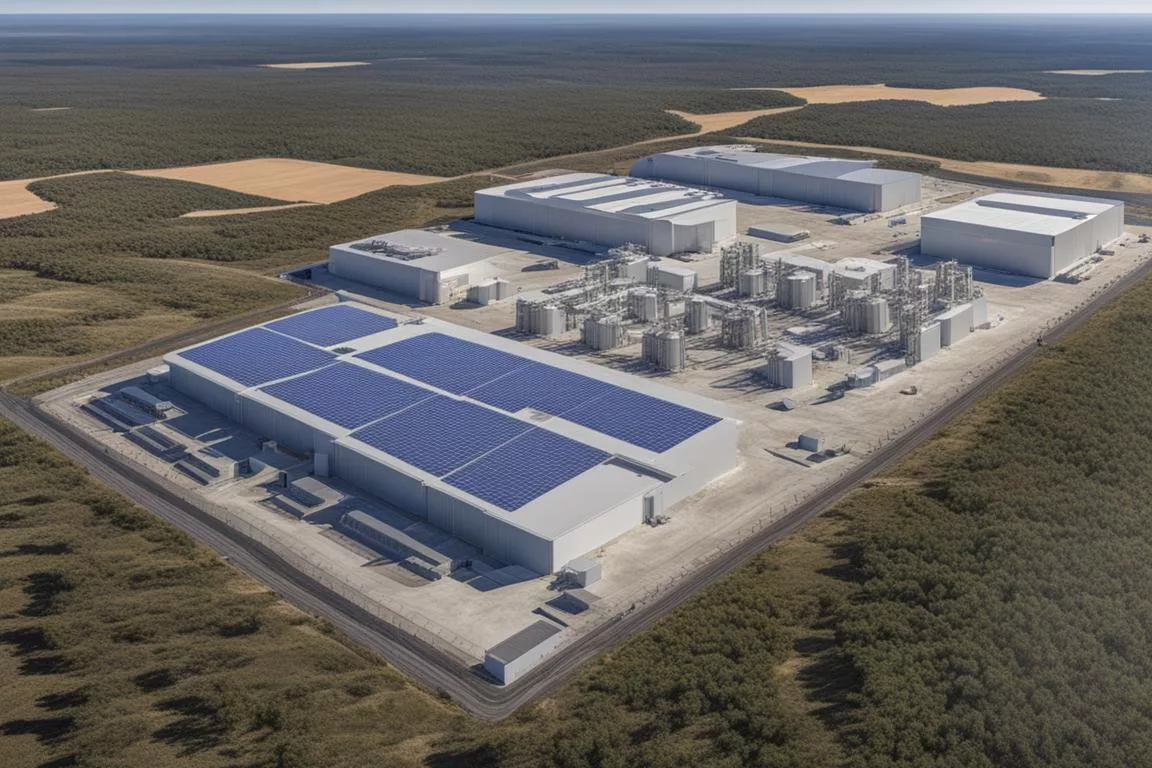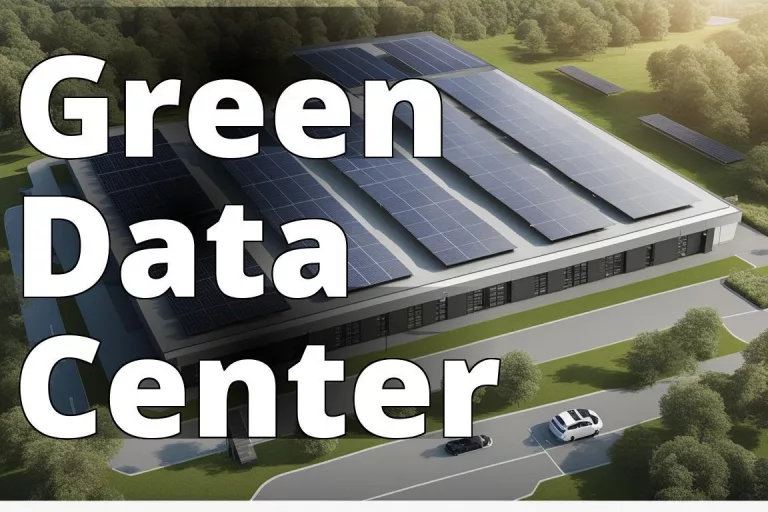A sustainable data center operates on the principles of minimizing environmental impact while maximizing efficiency. This involves leveraging renewable energy sources, optimizing energy consumption, responsibly managing waste, and selecting materials that are both durable and eco-friendly. At its core, a sustainable data center aims to do more with less, ensuring that the digital world’s insatiable appetite for data doesn’t come at the expense of the planet.
Learn about Sustainable Data Center Operations
- What is a sustainable data center?
- It is a data center designed to have minimal environmental impact.
- Why are sustainable data centers important?
- They help reduce energy consumption and carbon footprint.
- How do you make a data center sustainable?
- By using renewable energy, improving energy efficiency, using water responsibly, and more.

Why are sustainable data centers important?
Sustainable data centers are crucial for several reasons:
- Environmental Impact: Data centers consume vast amounts of energy, contributing significantly to global energy consumption and greenhouse gas emissions. Transitioning to sustainable practices, such as using renewable energy sources, helps reduce this environmental impact.
- Energy Efficiency: Sustainable data centers prioritize energy efficiency, reducing overall energy consumption and promoting responsible resource usage.
- Business Sustainability: Green computing practices not only benefit the environment but also lead to cost savings for businesses by reducing energy and IT costs. This contributes to broader business sustainability efforts and aligns with environmental, social, and governance (ESG) initiatives that are increasingly important for customers, employees, and investors.
- Carbon Footprint Reduction: By implementing green computing practices in data centers, companies can actively work towards reducing their carbon footprints, aligning with global efforts to combat climate change.
- Competitive Advantage: Developing green data centers is becoming a priority for companies across industries as it offers a competitive advantage by demonstrating a commitment to sustainability and responsible environmental stewardship.
How do data centers impact the environment?
Data centers have a significant impact on the environment in various ways:
- Energy Usage: Data centers consume vast amounts of electricity, accounting for approximately 3% of the global electricity supply. This high energy consumption contributes to greenhouse gas emissions and environmental strain.
- Water Consumption: Data centers require substantial amounts of water for cooling systems and other operational needs, impacting local water resources and contributing to water scarcity in some regions.
- Electronic and Toxic Waste: The operation and maintenance of data centers generate electronic waste, including outdated equipment, which can lead to toxic waste if not properly managed and disposed of.
- Land Use: Data centers require significant land for construction and operation, leading to habitat destruction and land use changes that can have environmental consequences.
- Noise Pollution: Data centers emit noise pollution, impacting local communities and ecosystems. The constant operation of servers and cooling systems contributes to acoustic waste, affecting the quality of life in surrounding areas.
Understanding the environmental impact of data centers is crucial for implementing sustainable practices to mitigate these effects, reduce energy consumption, manage waste responsibly, and promote eco-friendly operations in the digital infrastructure sector.
How do you make a data center sustainable?
Transitioning to a sustainable data center isn’t just a flick of a switch. It’s a comprehensive strategy encompassing multiple facets of operations. Here are key approaches:
1. Use renewable energy
Insider Tip: “Investing in renewable energy sources like solar or wind can drastically cut your carbon footprint and may even reduce operational costs over time.”
2. Improve energy efficiency
From upgrading to more efficient cooling systems to implementing server virtualization, enhancing your data center’s energy efficiency is a win-win for both the environment and your bottom line.
3. Use water responsibly
Innovative cooling technologies that reduce or eliminate water usage are becoming increasingly viable and should be a priority for any data center looking to improve its sustainability credentials.
4. Reduce, reuse, recycle
Whether it’s repurposing older equipment or recycling waste, a comprehensive approach to reducing your data center’s waste stream is essential for sustainable operations.
5. Choose sustainable materials
When building or upgrading facilities, opting for materials with a lower environmental impact can make a significant difference in the overall sustainability of a data center.

What are the benefits of sustainable data centers?
The benefits of sustainable data centers extend far beyond environmental conservation. For businesses, the reduced operational costs through energy efficiency can be a major financial boon. Moreover, in a world increasingly conscious of corporate responsibility, demonstrating a commitment to sustainability can enhance brand reputation and customer loyalty. Furthermore, sustainable practices can lead to innovations that not only benefit the data center but can be applied across industries.
What are the challenges of sustainable data centers?
Despite the clear advantages, the road to sustainability is not without its obstacles. The upfront costs of green technologies and infrastructures can be prohibitive for many organizations. Additionally, the rapid pace of technological advancement means that what’s considered sustainable today might be outdated tomorrow, challenging data centers to stay ahead of the curve. Moreover, the lack of universal standards for measuring sustainability in data centers can make it difficult to benchmark progress and identify areas for improvement.
How do you measure the sustainability of a data center?
Measuring the sustainability of a data center involves assessing various key metrics to quantify its environmental impact and resource efficiency. Here are some common metrics used to measure data center sustainability:
- Power Usage Effectiveness (PUE): PUE measures how efficiently a data center uses energy, with lower values indicating higher efficiency. It compares the total energy consumed by the data center to the energy used by IT equipment.
- Water Usage Effectiveness (WUE): WUE evaluates the water consumption efficiency of a data center, helping to monitor and reduce water usage in cooling systems and other operations.
- Carbon Usage Effectiveness (CUE): CUE measures the carbon emissions associated with data center operations, providing insights into the environmental impact of energy consumption.
- Renewable Energy Usage: Tracking the percentage of renewable energy sources used by a data center is crucial for assessing its commitment to sustainable practices and reducing reliance on fossil fuels.
- Waste Management Metrics: Monitoring electronic waste generation, recycling rates, and proper disposal practices helps evaluate a data center’s waste management efforts and environmental responsibility.
By utilizing these sustainability metrics, data center operators can assess their environmental impact, identify areas for improvement, and implement strategies to enhance resource efficiency and reduce their carbon footprint.
What are the most sustainable data centers in the world?
Some data centers stand out for their commitment to sustainability. Examples include Google’s data centers, which match 100% of their energy consumption with renewable energy purchases, and the Green Mountain Data Center in Norway, which operates entirely on hydropower and is cooled by the frigid waters of a nearby fjord.

How can I make my data center more sustainable?
Making your data center more sustainable is a journey that begins with small steps. Start by auditing your current operations to identify areas for improvement. From there, consider implementing the strategies outlined above, focusing on energy efficiency, renewable energy, and waste management. Engaging with industry experts and leveraging the latest technologies can also accelerate your path to sustainability.
Insider Tip: “Don’t overlook the power of software solutions for optimizing data center operations. Advanced analytics can uncover inefficiencies you weren’t even aware of.”
By embracing sustainable practices, data centers can play a pivotal role in mitigating the environmental impact of our digital world. The journey toward sustainability is complex and ongoing, but it’s one that can lead to significant environmental, economic, and social benefits. As technology and environmental consciousness continue to evolve, the role of sustainable data centers will only grow in importance, marking a critical step in our collective efforts to foster a more sustainable future.
For further exploration of how technology intersects with environmental sustainability, consider reading about agricultural data analytics for sustainable farming, the benefits of cloud-enabled environmental data analytics, and the importance of democratizing environmental data access. These resources offer invaluable insights into how data and technology can be harnessed for the greater good, underscoring the critical role of sustainability in our digital age.
Frequently Asked Questions
Who benefits from sustainable data center operations in environmental data analytics?
Companies that prioritize eco-friendly practices benefit the most.
What are the key aspects of sustainable data center operations?
Energy efficiency, renewable energy use, and waste reduction.
How can companies implement sustainable data center operations?
By optimizing cooling systems, using energy-efficient hardware, and adopting renewable energy sources.
What if a company finds sustainable data center operations too costly?
Initially, there may be a higher investment, but long-term savings and environmental benefits outweigh the costs.
How does sustainable data center operations impact environmental data analytics?
Sustainable practices reduce carbon footprint, making data analytics more eco-friendly and socially responsible.
Next Steps
Round Table Environmental Informatics (RTEI) is a consulting firm that helps our clients to leverage digital technologies for environmental analytics. We offer free consultations to discuss how we at RTEI can help you.


